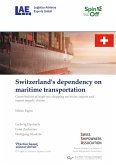Seminar paper from the year 2012 in the subject Economics - Finance, grade: 1,7, Maastricht University (School of Business and Economics), language: English, abstract: Since the development of supply chain management, management and academic researcher have pointed out the importance of social contacts, networks and relationships. Dense networks and loads of relationships were considered as competitive advantage and departments introduced extra budgets to invest in the relationships with any buyer or supplier to increase the social capital between those companies to the maximum, assuming a linear relationship between social capital and performance. However, the emphasis put on the bright side made companies blind for the negative effects of social capital and the fact that the relationship not can be understood as a linear function. This paper reviews selected pieces of literature on the topic of social capital in order to assess the paradox existing around the concept of social capital by studying how a buyer-supplier relationship can be affected positively as well as negatively by social capital. Furthermore, the specific concept of lock-in situations in supply chains will be explained and discussed.The first section discusses general definitions of social capital and different interpretations of the concept. In two subsections, the positive and negative aspects of social capital will be discussed. Afterwards, the next section will outline the factors influencing the outcomes of social capital. Subsequently, the last section elaborates on how to guard against the negative outcomes of social capital and how to deal with them if they are inevitable. Finally, a conclusion will be drawn and the limitations are addressed.
Bitte wählen Sie Ihr Anliegen aus.
Rechnungen
Retourenschein anfordern
Bestellstatus
Storno








